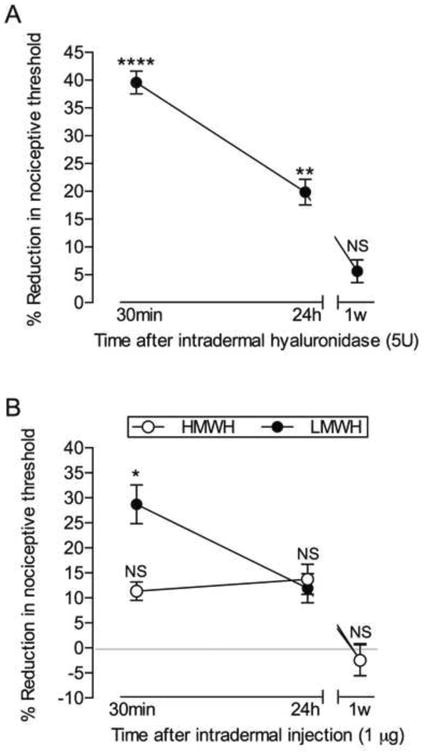Figure 1. Time course for mechanical hyperalgesia induced by hyaluronidase (A) and hyaluronan (B).

Panel A: Rats received an intradermal injection of hyaluronidase (5U) on the dorsum of the hind paw. Mechanical nociceptive thresholds were evaluated before and 30 min, 24 h and 1 week after injection, by the Randall-Selitto paw withdrawal test. The average baseline mechanical nociceptive threshold was 121.3 ± 1.3 grams. Marked mechanical hyperalgesia was observed when testing was performed 30 min after injection of hyaluronidase (**** p < 0.0001, when mechanical threshold is compared to pre-hyaluronidase level), and was still significant (** p = 0.0031) 24 h later. When evaluated after 1 week, the mechanical nociceptive threshold was no longer different (NS, p = 0.1145) from pre-hyaluronidase levels (one-way repeated measures ANOVA followed by Bonferroni's post hoc test); Panel B: Different groups of rats received intradermal injection of high (HMWH, 1 μg, open symbols) or low (LMWH, 1 μg, dark symbols) molecular weight hyaluronan on the dorsum of the hind paw. The mechanical thresholds were evaluated 30 min, 24 h and 1 week later. Average baseline mechanical nociceptive threshold was 116.3 ± 1.8 grams for HMWH group and 114.6 ± 3.2 for LMWH group. Two-way repeated measures ANOVA followed by Bonferroni's post hoc test showed no significant change (NS) in the mechanical nociceptive threshold after the injection of HMWH, when compared to pre-injection levels. However, significant hyperalgesia was observed at 30 min in the LMWH group (* p = 0.0092, when the mechanical thresholds before and 30 min after injection are compared). When both groups were evaluated again 24 h and one week later, the mechanical thresholds were not statistically different from the baseline levels. n = 6 paws (all groups)
